There’s an entire world within your coffee cup waiting to be discovered, a world that takes you beyond the simple morning pick-me-up and into a realm of deep flavors, robust aromas, and centuries-old traditions. We’re delving into the universe of espresso, a beverage that’s both a science and an art, revered by many and mastered by a devoted few.
In this article, “Espresso Drinks: Uncover the World of Exquisite Coffee Creations,” we’re embarking on a journey through the rich tapestry of these drink concoctions. We’re here to guide you through the diverse types of espresso drinks – from the beloved classics that grace the menus of coffee shops around the globe, to the exquisite specialty varieties that offer a unique twist on the traditional. Whether you’re a seasoned coffee aficionado or a curious beginner, prepare to immerse yourself in a world where each sip tells a story. Welcome to the captivating world of this delectable beverage.
Types of Espresso Drinks: Key Takeaway
- The versatility of espresso: This coffee serves as the foundation for a myriad of drinks, ranging from the basic espresso shot to complex milk-based beverages and unique regional variants. Its versatility demonstrates the depth and breadth of the coffee world.
- The art of espresso making: The extraction process of this drink is a fine balance of various factors, including grind size, brewing time, and water temperature. This delicate process contributes significantly to the distinct flavor profile of espresso drinks.
- Understanding milk-based espresso drinks: Beverages like Macchiatos, Cappuccinos, Lattes, and Flat Whites demonstrate the harmony between this beverage and milk. These espresso drinks highlight how variations in proportions and treatment of milk can create an entirely different coffee experience.
- Global interpretations: From the Café Cubano to the Italian Bicerin, the international variations of espresso drinks shed light on how different cultures have embraced and adapted this beloved beverage, introducing unique flavors and methods of preparation.
- Savoring espresso: Beyond just being a caffeine boost, the enjoyment of this delectable coffee drink is a sensory experience that can be enhanced by understanding the art of tasting, pairing it with the right foods, and learning from expert tips to elevate the overall experience.
The Journey of Espresso: A Brief History
The tale of this beverage is a captivating blend of innovation, tradition, and universal love for coffee. Its story begins in the picturesque country of Italy, moves through the annals of technological advancement, and culminates in the worldwide embrace of espresso-based drinks. Let’s delve deeper into this fascinating journey.
The Origins of Espresso

This beverage is a gem born out of Italian craftsmanship. It is a method of brewing coffee that involves the application of significant pressure to finely ground coffee beans, while directing nearly boiling water through them. The unique nature of this brewing method offers a wide range of possibilities, allowing for the use of an extensive variety of coffee beans and roast levels. This adaptability and diversity contribute to the flexibility and versatility of the process. This brewing method, now synonymous with southern Europe, particularly Italy, France, Spain, and Portugal, is also gaining popularity in regions like the United States, Canada, Australia, New Zealand, and more. (1)
The process yields a brew that is denser than coffee made by other methods, with a consistency similar to warm honey. The pressurized brewing process of this beverage results in a remarkable concentration of flavors and chemicals, leading to a profoundly rich and intense cup of coffee. While espresso boasts a higher concentration of caffeine per volume compared to most other coffee drinks, its petite serving size ensures a relatively lower overall caffeine content.
The charm of this coffee drink lies in its three dispersed phases. In this process, three distinct phases can be observed. The initial phase forms an emulsion of tiny oil droplets, followed by the second phase, which consists of suspended solid particles. Lastly, the third phase is distinguished by the presence of a layer composed of gas bubbles or foam. These phases result in a creamy mouthfeel and contribute to what is known as the ‘body’ of the beverage. Caffè Americano, caffè latte, caffè macchiato, caffè mocha, cappuccino and flat white are some of the delightful espresso-based drinks that can be crafted using this beverage as a base.
Evolution of the Espresso Machine
The evolution of the espresso machine is marked by creativity and technological advancements. The process of coffee brewing in this remarkable machine involves the application of pressurized water, heated to a temperature close to boiling, which is then forcefully passed through a compacted bed of finely ground coffee known as a ‘puck.’ This maneuver, aided by a filter, results in the creation of a luscious and concentrated beverage famously called espresso. The design of these machines has undergone significant transformations over the years.

The journey of this machine began in 1822, with the creation of the first espresso machine by the Frenchman Louis Bernard Rabaut. Over the years, several changes and improvements were made to the original design by innovators such as Luigi Bezzera and Desiderio Pavoni. In 1933, Francesco Illy invented the first automatic coffee machine that substituted pressurized water for steam, setting the foundation for today’s machines. (2)
These machines have been driven by various mechanisms over time, such as steam, piston, pump, or air pump, and can be manual or automatic. A key shift in the design came with the introduction of pump-driven machines in 1961, which have become a common sight in commercial espresso bars today. These machines work by using a motor-driven pump to provide the force necessary for brewing.
Espresso and its Global Impact
This beverage influence has been nothing short of global. Its unique brewing method and the range of espresso-based drinks it has inspired have left a significant impact on coffee cultures worldwide. The widespread appreciation of this coffee drink is not just confined to traditional forms but also embraces modern interpretations and regional variations.

In a sense, the story of this drink reflects the evolution of our global coffee culture, tracing a path from traditional Italian cafes to ubiquitous coffee chains and artisanal coffee shops around the world. Through its journey, This single beverage can bring people together, inspire creativity, and evolve to suit the tastes of different generations and cultures. It’s more than just a cup of coffee; it’s a testament to our shared love for this timeless beverage.
Understanding Espresso: What Sets It Apart
Now that we’ve traveled through the intriguing history of this beverage, let’s dive deeper into the elements that set this beverage apart from the rest of the coffee world.
Defining an Espresso
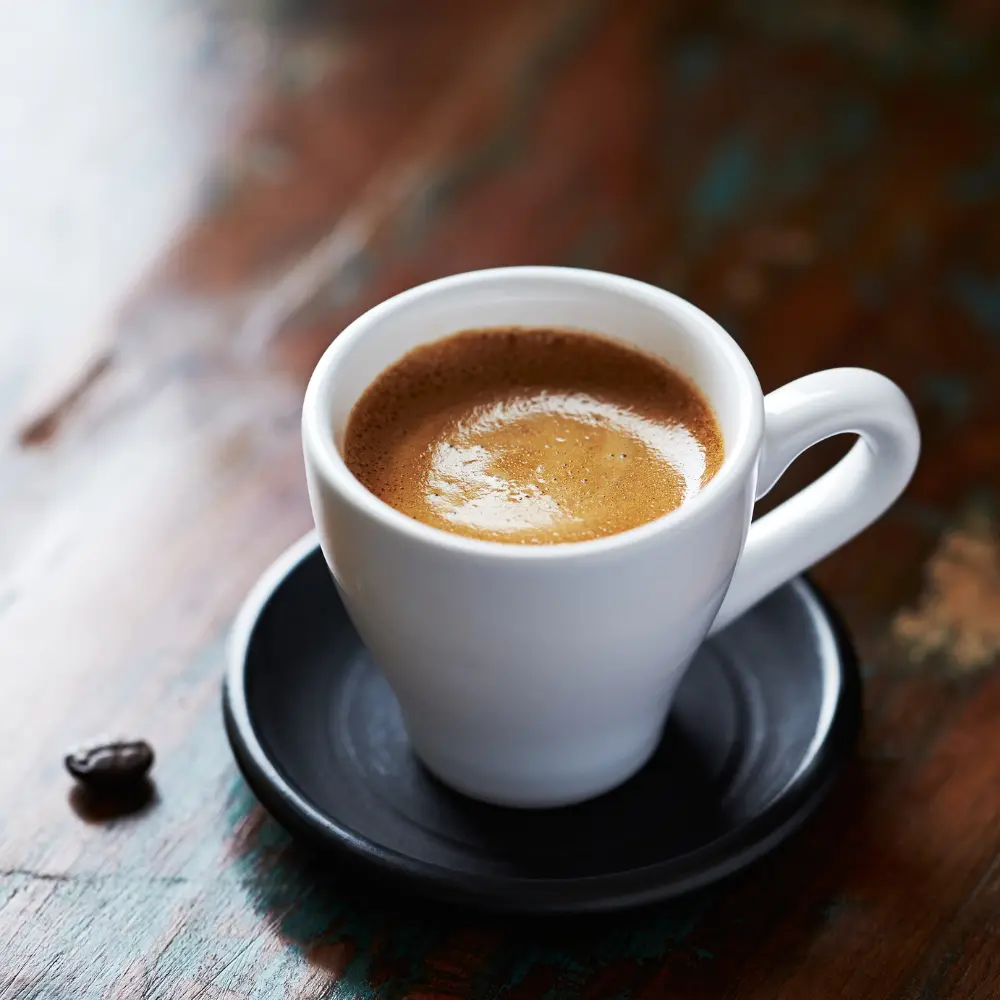
This beverage is not just a type of coffee but an experience. It’s a brewing method that presents coffee in its most concentrated and purest form. The brewing process involves pushing hot, nearly boiling water under high pressure through a finely ground, compact ‘puck’ of coffee. The result is a dense, intensely flavored liquid, typically served in small quantities due to its strength. The interplay of factors such as water temperature, pressure, coffee grind size, and extraction time all contribute to the unique characteristics of espresso drinks.
The Art of the Perfect Extraction
The art of this drink brewing is often likened to a scientific process, each step crucial to achieving the perfect shot. The process begins with selecting high-quality coffee beans, which are then finely ground to a consistency resembling table salt. The ground coffee is then packed or ‘tamped’ into the machine’s portafilter, creating a firm puck through which hot water is forced.
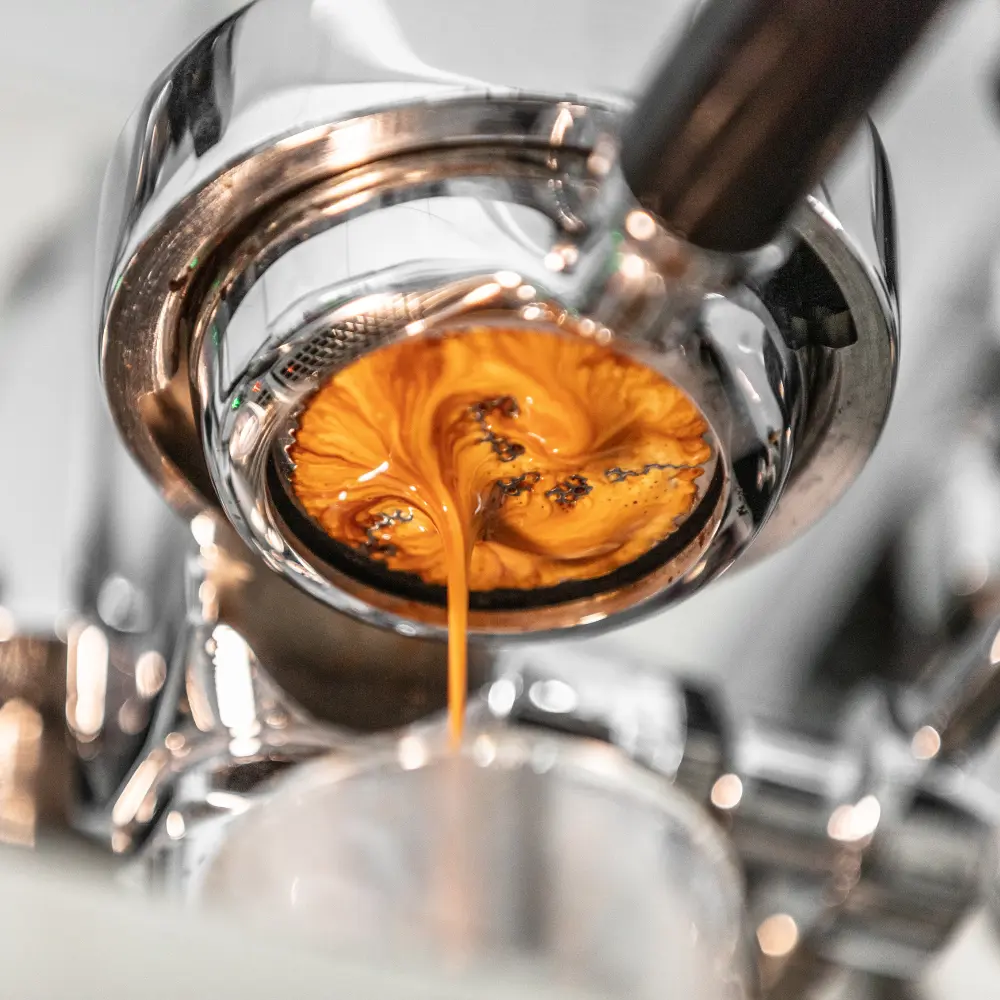
The water, heated to a precise temperature (usually between 90 – 96 degrees Celsius or 195 – 205 degrees Fahrenheit), is pushed through the compact coffee grounds under pressure, typically around 9-10 bars. The extraction process, which ideally lasts between 20 to 30 seconds, pulls out the flavors and oils in the coffee, resulting in a shot of espresso.
A well-extracted cup of this drink features a balance of flavors, none overpowering the others. It is neither too bitter (a sign of over-extraction) nor too sour (a sign of under-extraction). The taste profile should reflect the inherent characteristics of the coffee beans used, exhibiting a harmony between sweetness, bitterness, and acidity.
The Significance of Crema in Espresso
One of the defining features of this beautifully brewed drink is the crema – the layer of creamy foam. This golden-brown froth, which forms as a result of the pressurized brewing process, is an indicator of the drink’s quality.
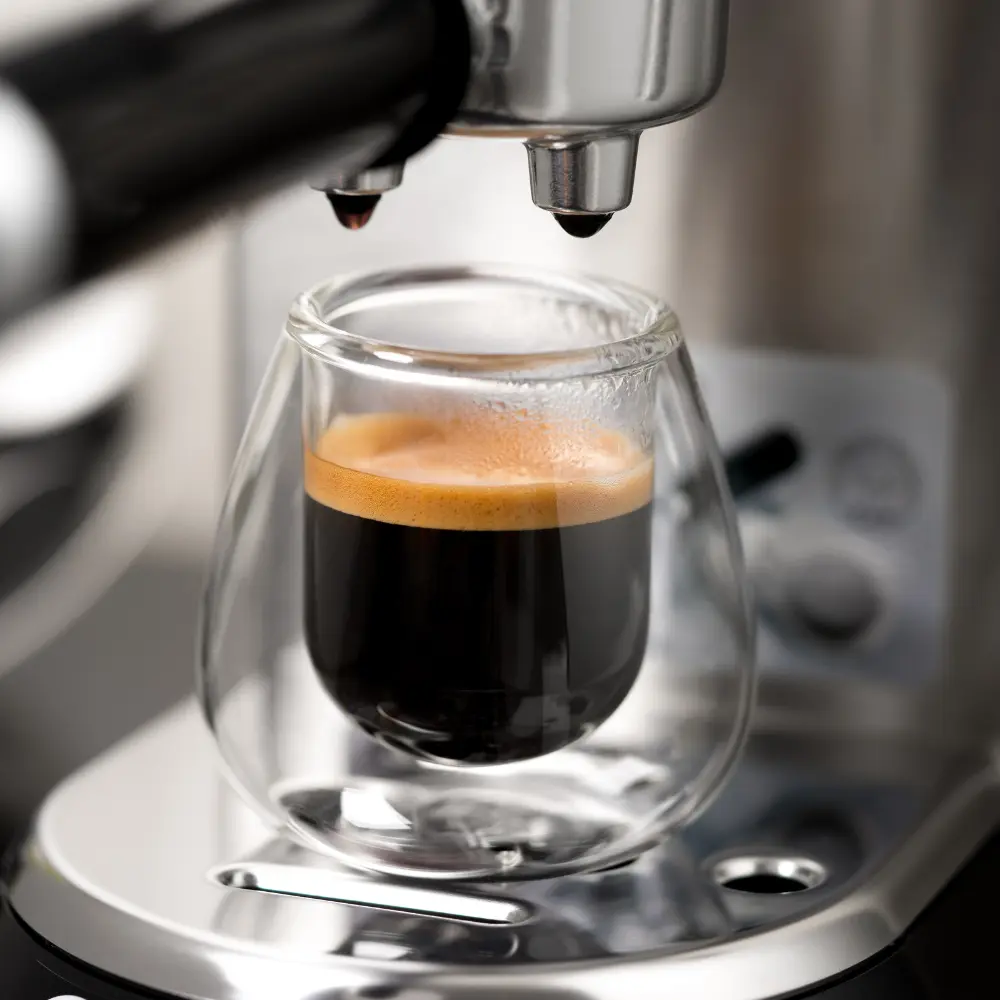
The crema originates from carbon dioxide released from coffee grounds during the extraction process. This carbon dioxide, trapped in tiny oil droplets, forms bubbles that rise to the top, creating a foam layer. The crema adds to the sensory experience of enjoying this lovely beverage, contributing to the aroma, taste, and aftertaste of the shot.
A cup of this lovely coffee drink, with a thick, rich crema suggests a fresh roast, proper grind, and an optimal extraction process. On the contrary, a lack of coffee crema or thin, pale crema may indicate stale beans, an improper grind, or issues with the extraction process.
In essence, this coffee drink is a celebration of coffee’s intricate flavors and textures. Through the careful art of brewing, the essence of the coffee bean is presented in its most concentrated form, accentuated by the rich, velvety crema. It’s a testament to the beauty and complexity that lies within each tiny coffee bean.
Exploring the Different Espresso Drinks
Dive into the enticing universe of espresso-based drinks, where each beverage tells a unique story of flavors, culture, and brewing techniques. From the classic espresso shot that sets the stage, to the globally loved Caffè Latte, each drink has its own personality and allure. This guide will whisk you on a journey through the distinctive characteristics of various types of espresso drinks, illuminating their origins, key highlights, and even sharing fun facts along the way. Prepare your palate and join us as we navigate through the intricate world of espresso-based drinks, where the richness of coffee meets creativity in a symphony of tastes.
The Classic Espresso Shot
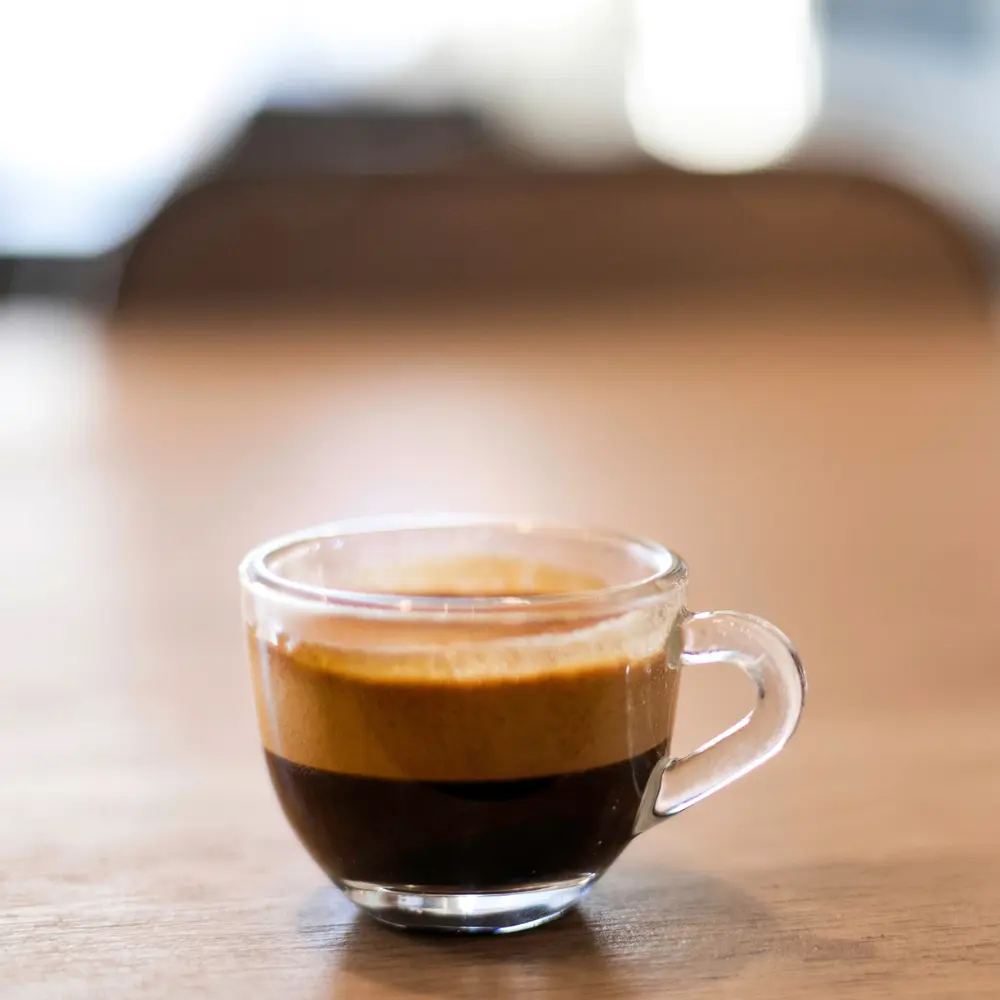
Originating from Italy, the Classic Espresso Shot has become a symbol of pure coffee indulgence worldwide. It’s the base for many other coffee drinks, and despite its small size, it delivers a rich, intense flavor. It’s typically served in “shots,” which are small, concentrated servings of about 25-30 milliliters.
- How it’s made: This invigorating beverage is created by applying substantial pressure to nearly boiling water, forcing it through finely ground coffee beans.
- Key Highlight: The distinctive feature of this coffee shot is its crema – a layer of creamy foam that forms on the top of the shot, often indicating a well-extracted coffee drink.
- Fun Fact: Despite its small size, this beverage forms the foundation for almost all other coffee shop drinks, making it a versatile choice for coffee lovers.
The Doppio

For those who crave a stronger hit of coffee, the Doppio, which translates to ‘double’ in Italian, is a perfect choice. As the name suggests, a Doppio is essentially a double shot of espresso. It offers twice the amount of a regular shot, giving a more profound and concentrated coffee experience.
- How it’s made: A Doppio typically takes twice as long to pull and is served in a larger cup.
- Key Highlight: The standout feature of a Doppio is its increased intensity, offering coffee aficionados a deeper, more concentrated coffee flavor.
- Fun Fact: When you order this beverage in many coffee shops, you’re often actually getting a Doppio, which has become the standard serving size.
The Ristretto
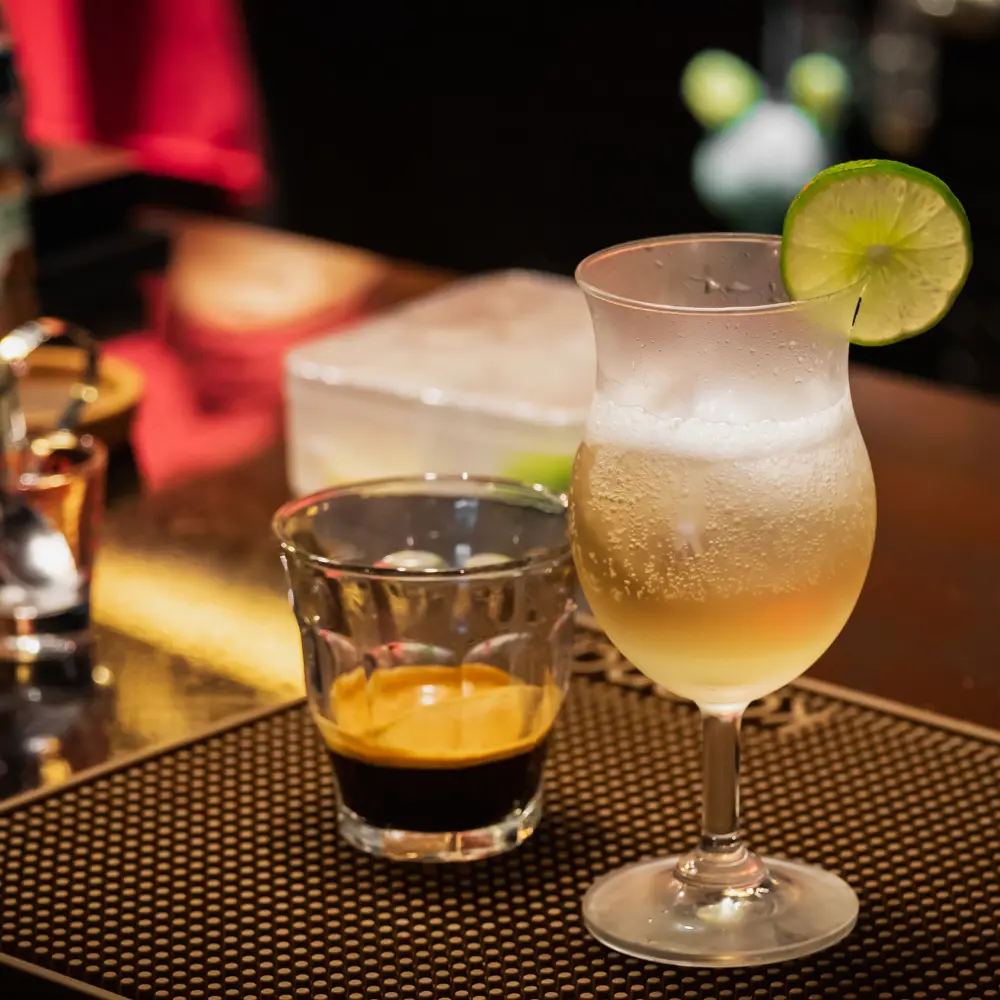
If the usual espresso shot isn’t intense enough for you, meet the Ristretto. Meaning ‘shortened’ in Italian, the Ristretto coffee uses less water than a regular shot but the same amount of coffee. This results in a shorter, more concentrated coffee shot, delivering a bold and rich flavor.
- How it’s made: A Ristretto is created using half the amount of water but the same amount of coffee as a standard shot.
- Key Highlight: The Ristretto is known for its intensity, offering a more concentrated and richer taste.
- Fun Fact: Some coffee connoisseurs consider the Ristretto to be the absolute best way to taste the full profile of the coffee beans, owing to its concentrated extraction method.
The Lungo

An ‘elongated’ espresso in the coffee world, the Lungo is a less intense but larger variant of a typical espresso shot. It translates to ‘long’ in Italian, referring to the extended extraction process that this drink undergoes.
- How it’s made: The Lungo is brewed by allowing more water (almost double the quantity) to pass through the coffee grounds, thus extracting more flavors and making a larger drink.
- Key Highlight: The Lungo has a unique, slightly bitter taste due to the prolonged extraction process, which extracts more bitter compounds from the coffee beans.
- Fun Fact: Despite having more water, a Lungo actually contains more caffeine due to the extended extraction period, which pulls more caffeine out of the coffee grounds.
The Americano
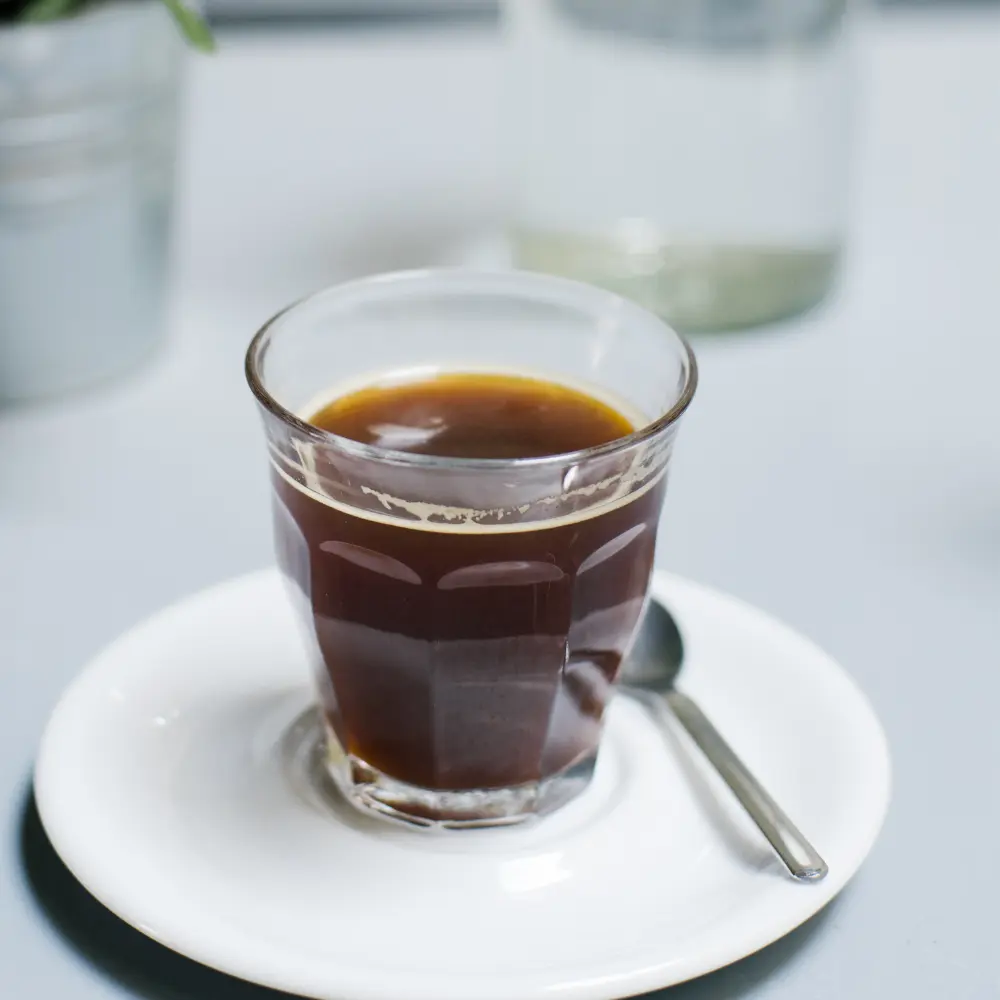
The Americano is a well-loved coffee choice for those who appreciate the robust flavor of espresso but prefer a larger, less intense beverage. It combines the richness of this beverage with the smoothness of hot water for a well-rounded coffee experience.
- How it’s made: An Americano is made by pouring a shot of espresso and then adding hot water to it, essentially diluting the espresso to create a drink that’s similar in strength to traditionally brewed coffee.
- Key Highlight: Americanos are appreciated for their versatility. You can adjust the intensity of the drink by varying the amount of water added.
- Fun Fact: The name “Americano” dates back to World War II. American soldiers stationed in Italy would dilute this beverage with hot water to mimic the coffee they were accustomed to back home.
The Caffè Latte
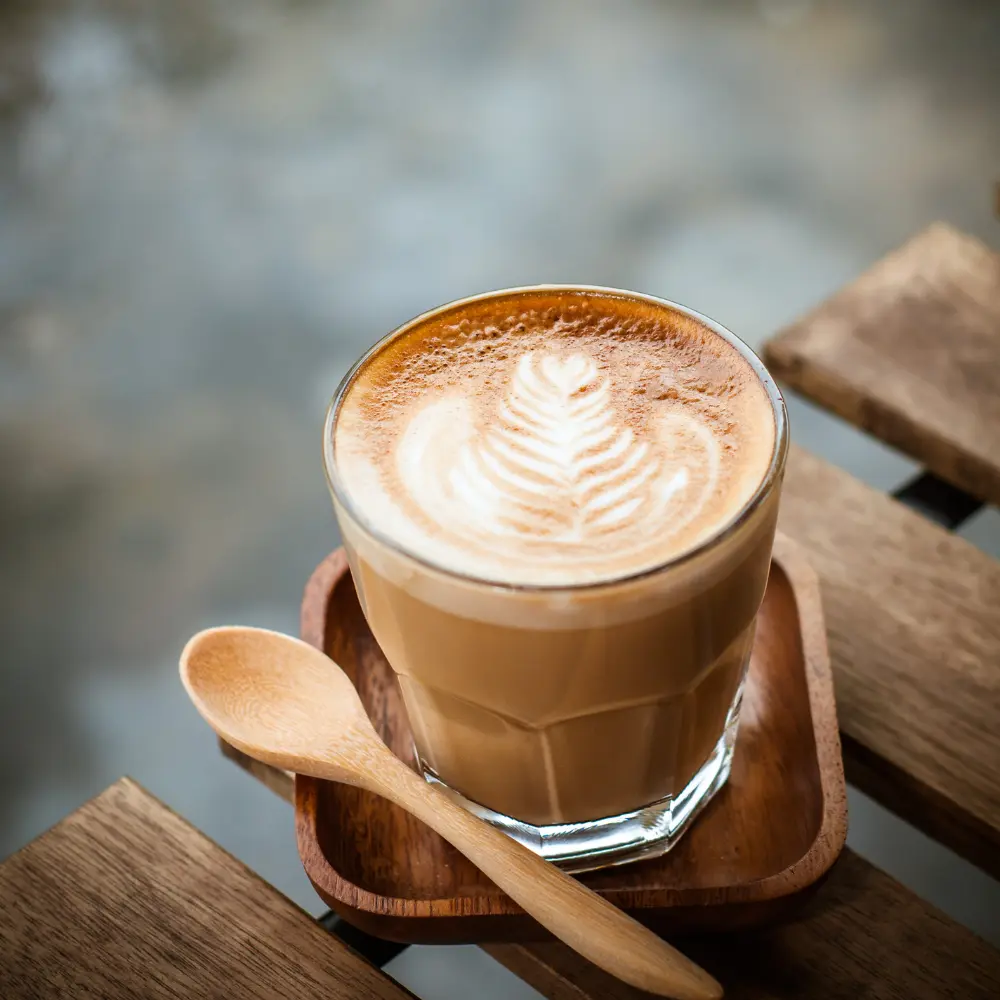
A harmonious blend of espresso, steamed milk, and a light layer of foam, the Caffè Latte is a globally popular choice. Its soothing balance of flavors makes it the go-to morning drink for many coffee lovers.
- How it’s made: A Caffè Latte is typically one-third espresso, two-thirds heated milk, and a small layer of milk foam on top. The ratios can vary depending on personal preference.
- Key Highlight: The Caffè Latte stands out for its creamy texture and mellow flavor, making it one of the most approachable and versatile espresso-based drinks.
- Fun Fact: “Latte” is the Italian word for milk, which is fitting, as milk is the dominant ingredient in this drink. In Italy, if you ask for a “latte,” you’ll get a glass of milk!
The ‘Eye-Opening’ Espresso Concoctions

Even in the realm of coffee, there is room for metaphor, where names alone can invigorate as much as the drink itself. Let’s explore the ‘Eye’ series of coffee drinks, each promising a unique jolt to awaken your senses.
The Red Eye
The Red Eye, also known as a Shot in the Dark, is a full cup of drip coffee with a shot of espresso added in. This concoction is not for the faint-hearted and promises a solid caffeine kick.
- How it’s made: Brew a cup of regular drip coffee and add a shot of espresso.
- Key Highlight: This coffee’s high caffeine content, courtesy of the coffee shot in a full cup of joe, is a surefire pick-me-up.
- Fun Fact: The Red Eye gets its name from its ability to keep you awake and alert, much like late-night, long-haul ‘red-eye’ flights.
The Black Eye
Like its cousin, the Red Eye, the Black Eye coffee ups the ante by adding not one, but two coffee shots to a full cup of drip coffee.
- How it’s made: Brew a cup of regular drip coffee and add two shots of espresso.
- Key Highlight: This coffee drink is even stronger and more caffeinated than the Red Eye coffee, making it a heavyweight champion of caffeinated brews.
- Fun Fact: The Black Eye’s name refers to the coffee’s intense strength, like receiving a metaphorical ‘black eye’ from the caffeine punch.
The Dripped Eye
The Dripped Eye is a variation of the Red Eye, which involves adding a coffee shot to half a cup of drip coffee, creating a slightly less potent but equally stimulating brew.
- How it’s made: Brew half a cup of regular drip coffee and add a shot of espresso.
- Key Highlight: The Dripped Eye is a good choice for those who want the kick of a Red Eye but with a little less intensity.
- Fun Fact: Despite the smaller volume, the Dripped Eye maintains a caffeine punch, making it a ‘small but mighty’ coffee concoction.
The Lazy Eye
The Lazy Eye is a combination of decaffeinated drip coffee and a shot of espresso. It offers a great flavor with a bit less of a caffeine jolt.
- How it’s made: Brew a cup of decaffeinated drip coffee and add a shot of espresso.
- Key Highlight: The Lazy Eye delivers the full-bodied flavor of an espresso-drip blend but with a lower caffeine content thanks to decaf coffee.
- Fun Fact: Despite its name, the Lazy Eye can still give a pretty decent caffeine kick, as a standard coffee shot is used.
From Macchiato to Cappuccino: Milk-Based Espresso Drinks
When this lovely beverage meets milk, a beautiful marriage of flavors and textures is formed. The world of milk-based espresso drinks is vast and inviting, providing a myriad of taste experiences and inviting variations. Whether it’s the delicate balance of the Macchiato, the foamy delight of a Cappuccino, the velvety allure of a Flat White, or the harmonious Cortado, each drink brings its own enchanting tale of taste. Uncover the unique attributes, preparation methods, and charm of these delightful concoctions in the chapters that follow.
The Macchiato

A perfect mid-point between a potent espresso shot and a more diluted cappuccino, the Macchiato offers a unique balance that coffee enthusiasts adore. Derived from the Italian verb ‘macchiare’, which means ‘to stain’, this delightful concoction is essentially an espresso ‘stained’ with a spot of milk, usually frothed. The addition of this little dollop of milk subtly softens the robustness of this coffee drink, while still letting its intense flavor shine through.
- How it’s made: A Macchiato is made by brewing a single or double espresso shot and then adding a small amount of frothed milk to the top.
- Key Highlight: Striking the perfect balance between this beverage and a milk coffee, the Macchiato retains a bold flavor, with a slight hint of creaminess from a touch of milk.
- Fun Fact: Despite its ‘stain’ of milk, a traditional Macchiato has a strong flavor, which is why it’s a favorite among those who enjoy the intensity of this beverage but prefer a little softening of its robust edge.
The Cappuccino
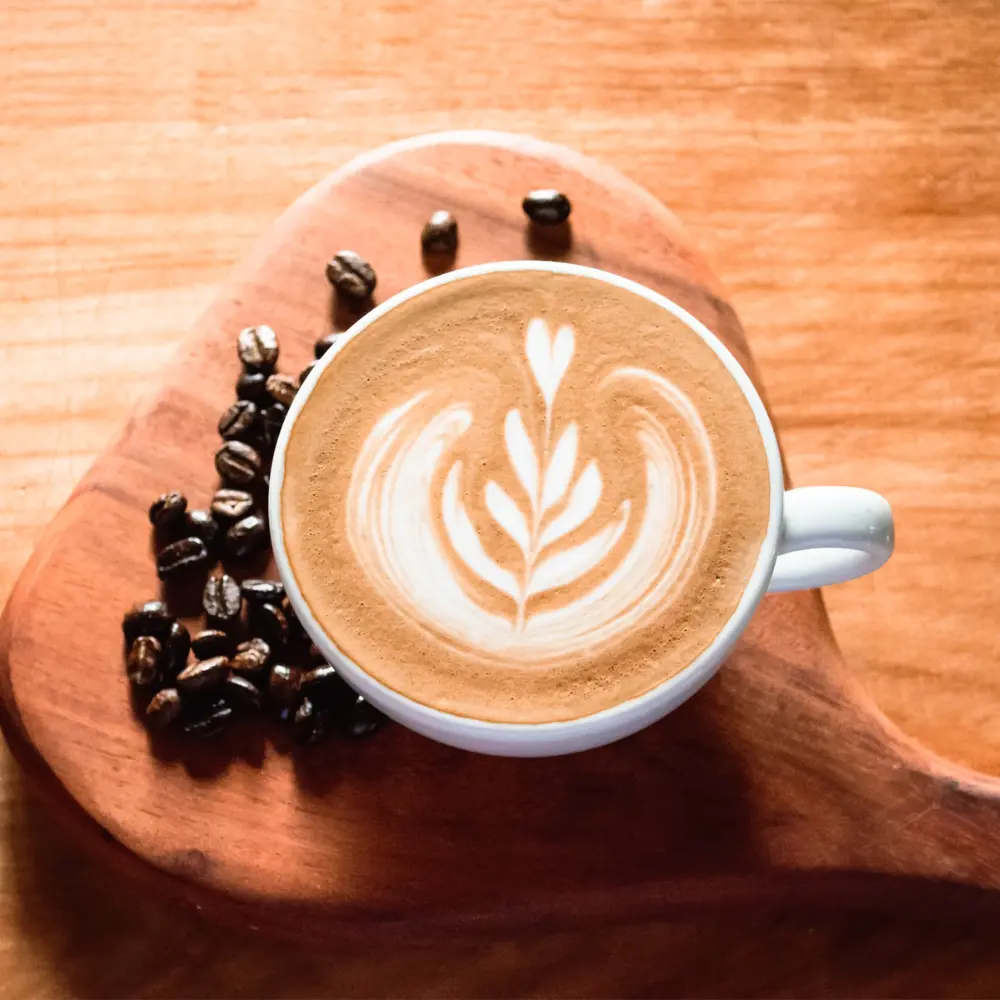
The Cappuccino has its roots deep in Italian coffee culture. Consisting of equal parts espresso, steamed milk, and frothed milk, it’s renowned for its rich flavor and creamy, foamy texture. The charm of a Cappuccino lies in its structure – a strong base of this coffee, a middle layer of hot milk, and a top layer of frothy, airy milk.
- How it’s made: To make a Cappuccino, start by brewing a single shot of espresso, followed by adding equal amounts of steamed and frothed milk.
- Key Highlight: A well-crafted Cappuccino showcases the beautiful harmony of espresso and milk, with the frothy milk crown adding an extra layer of delight.
- Fun Fact: The name Cappuccino comes from the resemblance of the drink’s color to the robes of the Capuchin monks, one of the principal fraternities within the Catholic Church.
The Flat White
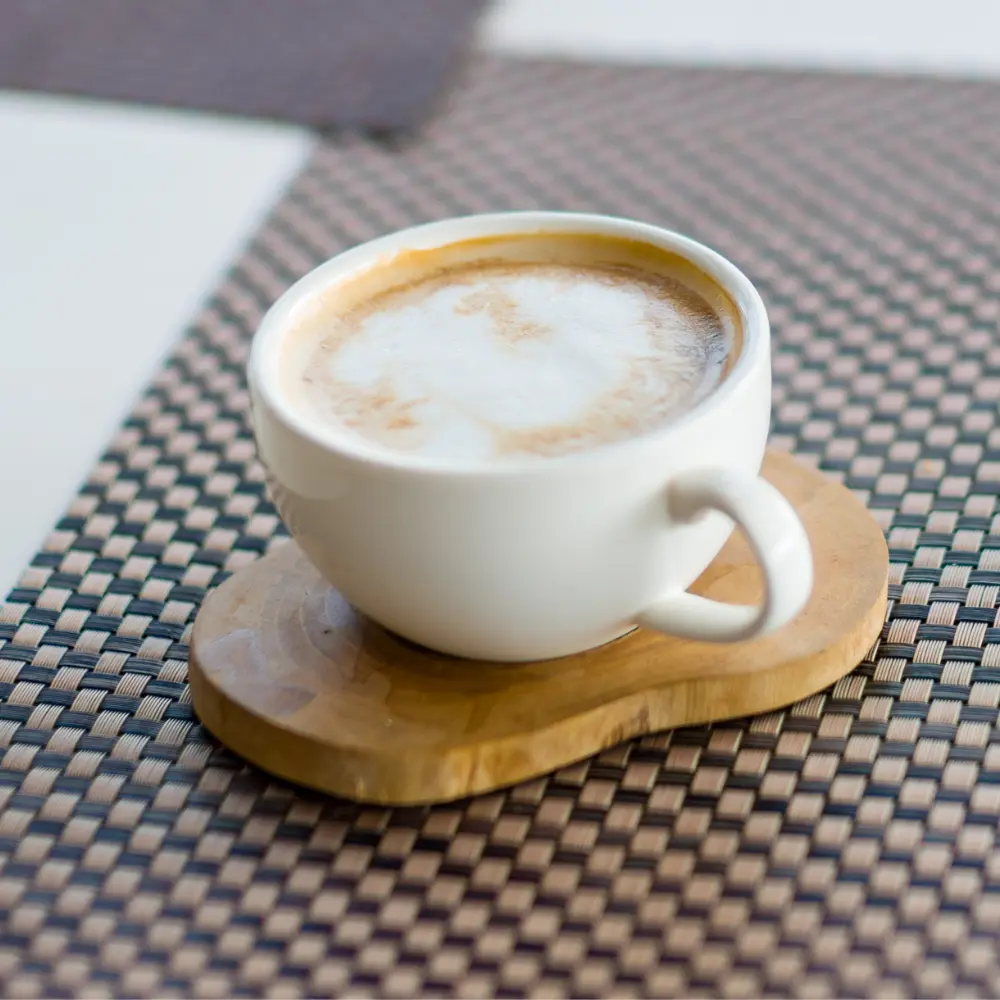
Originating from Australia and New Zealand, Flat White has rapidly gained popularity across the globe. This coffee beverage combines the intensity of espresso with the rich, velvety texture of steamed milk. A key characteristic of Flat White is its ‘microfoam’ milk – steamed milk that is gently frothed to a smooth and glossy finish, creating a creamy texture throughout the drink.
- Key Highlight: The Flat White is known for its velvety microfoam milk, which seamlessly integrates with this coffee to create a full-bodied yet smooth coffee experience.
- Fun Fact: There’s an ongoing debate between Australians and New Zealanders about the true origin of the Flat White. Both countries claim they invented it!
- How it’s made: A Flat White is made by pouring a double shot of espresso into a cup, followed by a similar volume of steamed ‘microfoam’ milk.
The Cortado

The Cortado, a Spanish classic, is a harmonious blend of equal parts espresso and warm milk. The milk in a Cortado coffee is not frothy but merely steamed, aimed to reduce acidity. The result is a wonderfully balanced, smooth drink that’s less milky than a latte.
- How it’s made: To make a Cortado, start by brewing a shot of espresso. Warm a similar amount of milk without frothing, and pour it into the drink to ‘cut’ through its intensity.
- Key Highlight: The Cortado strikes a perfect equilibrium between the robust espresso and the gentleness of warmed milk, leading to a smooth, balanced beverage.
- Fun Fact: The name ‘Cortado’ comes from the Spanish verb ‘cortar’, meaning ‘to cut’, signifying how the milk ‘cuts through’ the drink, reducing its acidity.
The Latte Macchiato
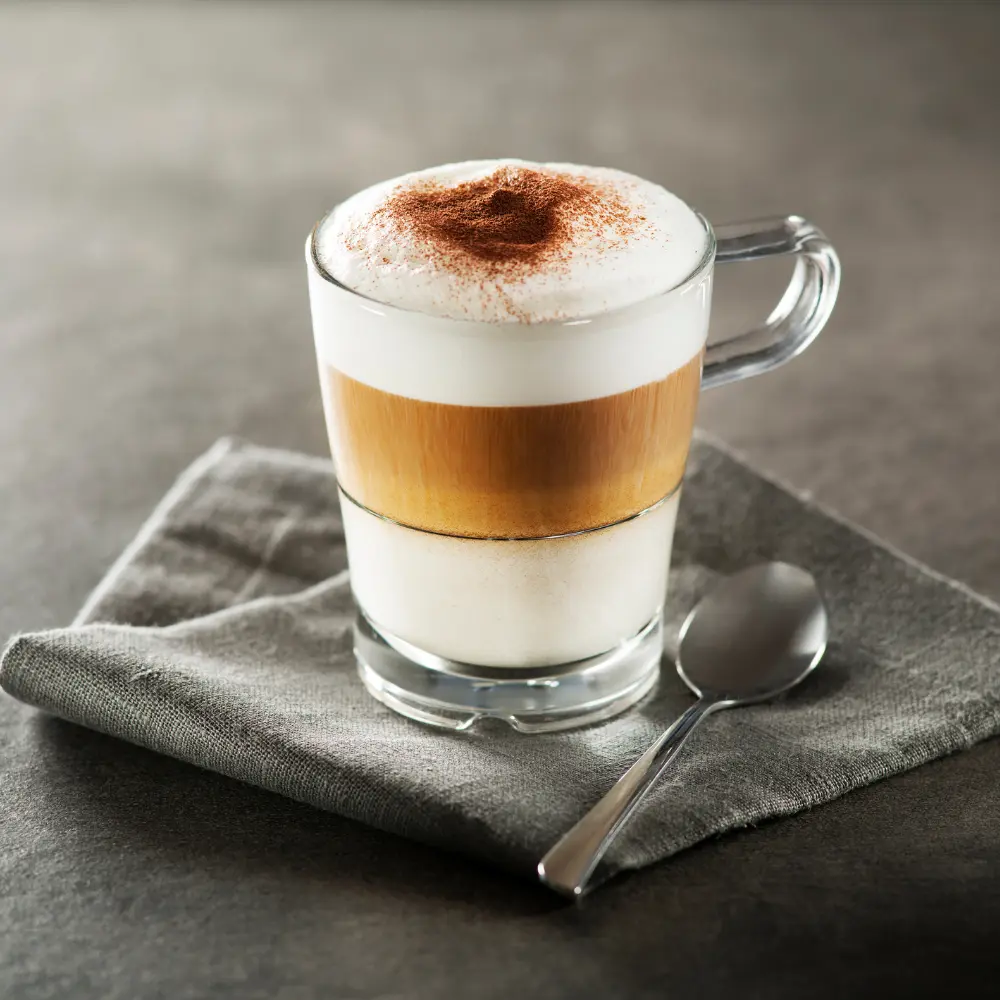
Latte Macchiato is a delicious concoction that beautifully melds the creamy texture of milk with the potent punch of espresso.
- How it’s made: To create a Latte Macchiato, first fill a glass two-thirds full with steamed milk. Carefully pour in a shot of espresso, which will form its own layer in the middle of the glass, and finally top it off with a spoonful of milk foam.
- Key Highlight: The Latte Macchiato is known for its distinct layers, where steamed milk, espresso, and milk foam each occupy their own section of the cup.
- Fun Fact: The term “Latte Macchiato” translates from Italian as “stained milk”, referring to the staining of the milk with a shot of espresso.
The Mocha
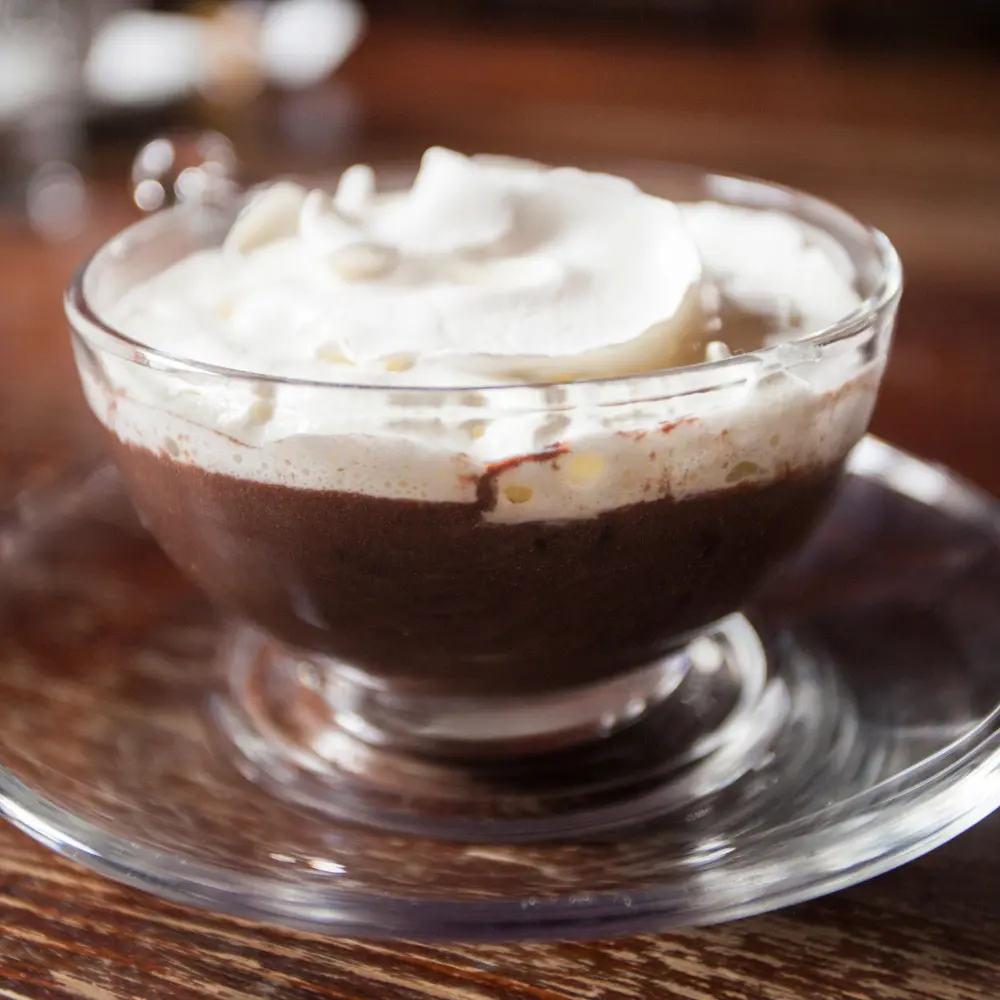
The Mocha, also known as a Mochaccino or Caffè Mocha, is a delightful marriage of coffee and chocolate, providing a sweet reprieve for those with a sweet tooth. Named after the Mocha beans that were traditionally used in the blend, this drink is a fusion of espresso, steamed milk, and chocolate, usually topped off with whipped cream.
- How it’s made: To prepare a Mocha, combine a shot of espresso with hot chocolate (usually in the form of cocoa powder or syrup). Top it up with steamed milk, a layer of foam, and a dollop of whipped cream.
- Key Highlight: The Mocha is a treat for chocolate lovers, adding a sweet twist to the drink.
- Fun Fact: The term ‘Mocha’ originally referred to a type of coffee bean from Yemen. These beans had a distinct chocolate-like flavor, hence the name’s transition to the chocolate coffee drink we know today.
The Breve
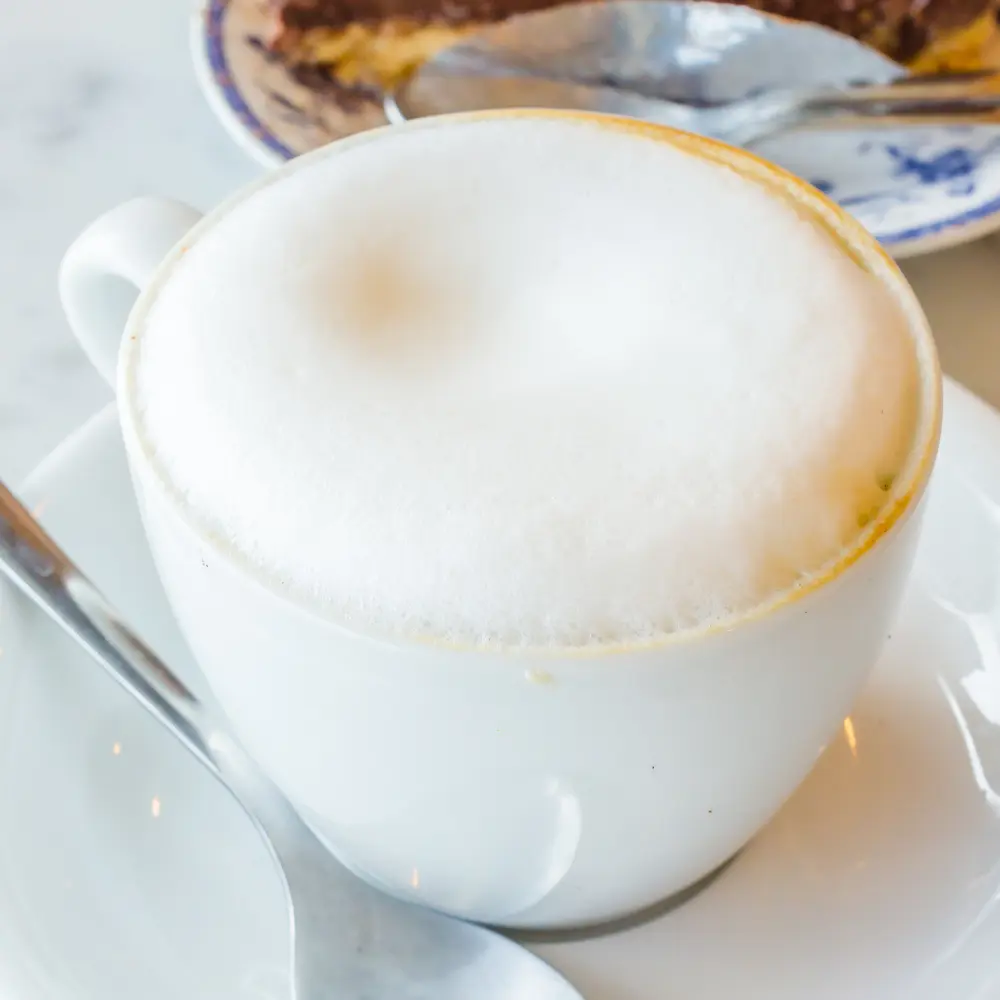
A Caffè Breve, often simply known as a Breve, takes the creaminess of coffee drinks to another level. In this luxurious variation of a latte, half-and-half (a blend of milk and cream) is used instead of regular milk, resulting in a velvety, rich texture and a unique taste.
- How it’s made: To make a Breve, start with a shot of espresso. Steam and froth half-and-half to create a velvety texture, and then add it, ensuring a thick layer of foam on top.
- Key Highlight: The Breve is distinguished by its extravagant creaminess and rich texture, thanks to the use of half-and-half.
- Fun Fact: The term ‘Breve’ is Italian for ‘short’, and it implies the condensed, richer experience this drink offers compared to a traditional latte.
The Affogato

An Affogato takes espresso drinks to a dessert-like level. This Italian creation is simple yet indulgent: a scoop of vanilla ice cream or gelato is ‘drowned’ with a shot of hot espresso, resulting in a delightful blend of hot and cold, sweet and bitter.
- How it’s made: To prepare an Affogato, place a scoop of vanilla ice cream or gelato in a serving glass or cup, and pour a shot of hot espresso over it.
- Key Highlight: The Affogato stands out as a dessert drink, combining the richness of gelato with the robust intensity of this beverage.
- Fun Fact: The term ‘Affogato’ in Italian means ‘drowned’, which aptly describes how the gelato or ice cream is doused in the coffee shot.
The Global Spin: Regional Espresso Variations
Beyond the standard preparations of this delectable coffee drink, a world of regional espresso variations awaits discovery. Each region imparts its unique culinary culture to this drink, creating a plethora of diverse types of espresso drinks. Let’s take a brief tour around the globe to savor the regional spins on our beloved beverage.
The Café Cubano
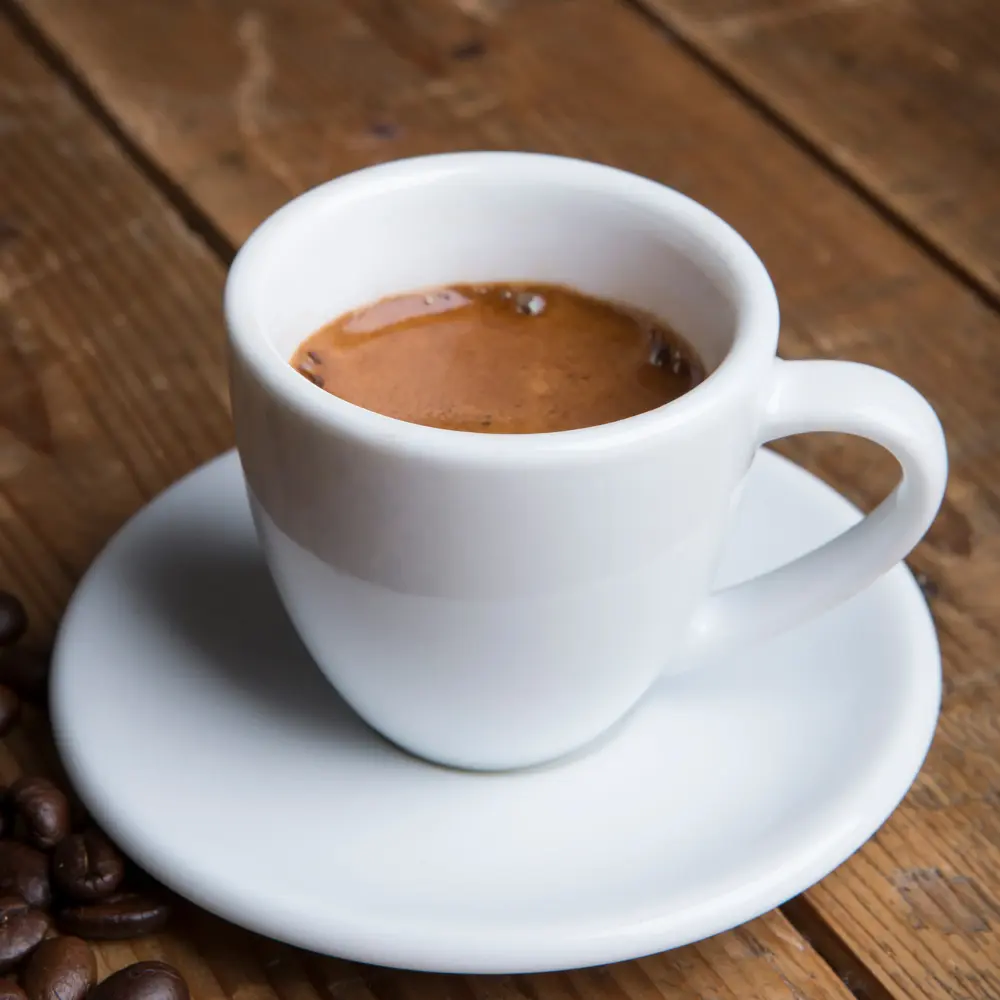
The Café Cubano, also known as Cuban espresso or Cafecito, is a strong, sweet espresso shot with Cuban roots. The shot is sweetened with demerara sugar as it’s being brewed, resulting in a sweet and powerful coffee experience.
- How it’s made: To make a Café Cubano, mix demerara sugar with a little espresso to create a thick, sugary paste. Brew the rest over this mixture, ensuring the coffee is sweetened throughout.
- Key Highlight: The Café Cubano is noted for its sweetness, with sugar added during brewing rather than after, creating a slightly thicker and sweeter coffee shot.
- Fun Fact: In Cuban culture, Café Cubano is a central part of daily life and social interactions. It’s customary to brew a pot in the morning and share it with anyone nearby.
The Café con Leche

Café con Leche, literally meaning ‘coffee with milk,’ is a Spanish coffee drink that consists of equal parts of strong coffee and scalded milk. It’s a staple in Spanish-speaking countries and is similar to a café au lait.
- How it’s made: To make a Café con Leche, pour an equal amount of brewed espresso and scalded milk into a cup. Some variations involve adding sugar or a pinch of salt.
- Key Highlight: Café con Leche is characterized by its equal ratio of coffee to milk, making it a mild, creamy, and well-balanced drink.
- Fun Fact: In Spain and Latin America, Café con Leche is typically enjoyed at breakfast and is often paired with pastries or toast.
The Galão

The Galão hails from Portugal and is a lighter, milkier version of a latte. Typically served in a tall glass, it consists of about one-quarter espresso and three-quarters foamed milk, making it a perfect choice for those who prefer a milder coffee drink.
- How it’s made: To make a Galão, brew a shot of espresso and pour it into a tall glass. Fill the rest of the glass with steamed and frothed milk.
- Key Highlight: The Galão is noted for its high milk-to-coffee ratio, which makes it a milder and creamier drink.
- Fun Fact: The Galão is enjoyed with breakfast in Portugal and is often served alongside a Pastel de Nata, a popular Portuguese pastry.
The Wiener Melange
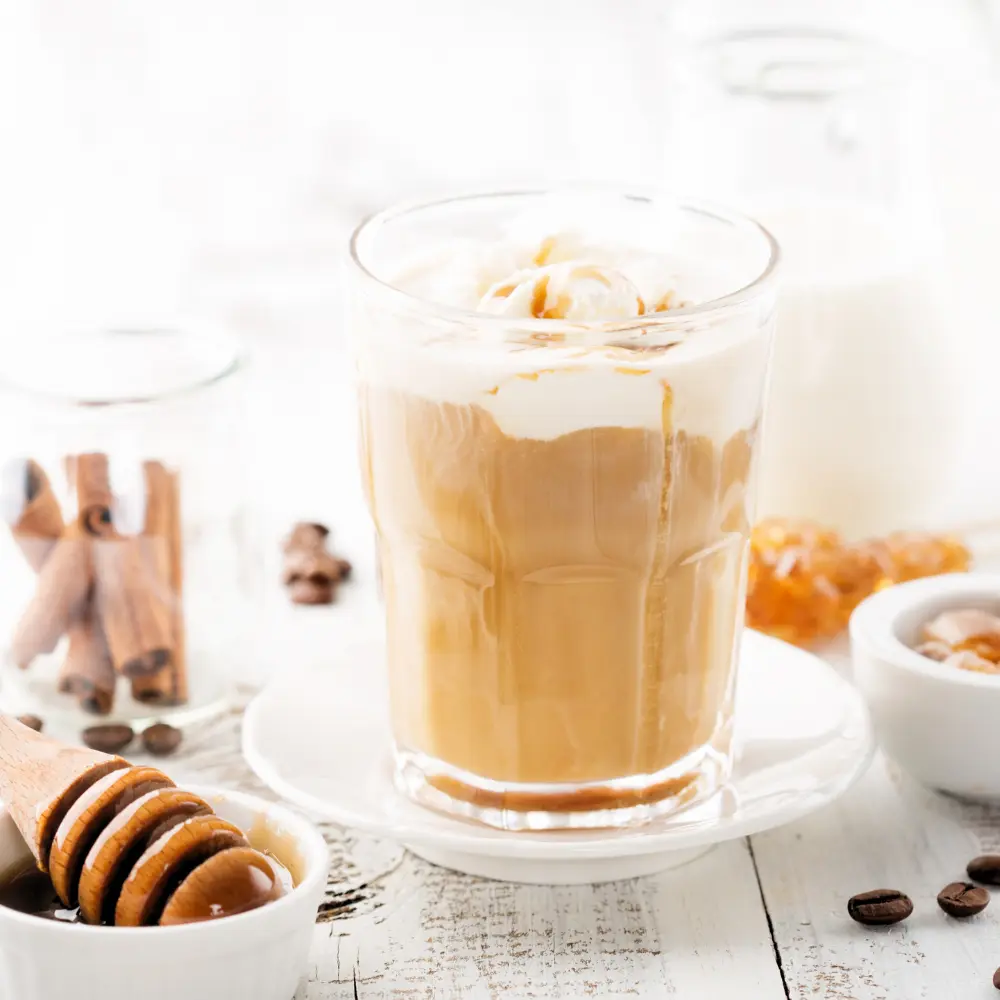
A Wiener Melange presents itself as a delightful coffee concoction akin to the well-known cappuccino. However, it distinguishes itself by employing a milder coffee blend. Interestingly, the English phrase “Cafe Vienna” and the French term “Café Viennois” commonly allude to an espresso con panna, where whipped cream adorns the brew instead of milk foam. It’s worth noting that even in Vienna, requesting a Wiener Melange may result in the arrival of an espresso con panna, which is more accurately referred to as a Franziskaner, reminiscent of a Franciscan friar.
- How it’s made: To make a Wiener Melange, brew an espresso shot into a large cup, add steamed milk, and top with a generous dollop of whipped cream.
- Key Highlight: The Wiener Melange is known for its blend of espresso, steamed milk, and a dollop of whipped cream on top.
- Fun Fact: “Melange” means “blend” in French, which perfectly describes this coffee’s delightful blend of ingredients.
The Viennese Espresso

The Viennese Espresso is a coffee drink originating from Vienna, Austria. It’s essentially a shot of espresso topped with whipped cream and sprinkled with chocolate, offering a more indulgent and decadent experience.
- How it’s made: To make this drink, prepare a shot of espresso, top with whipped cream, and sprinkle with chocolate powder or shavings.
- Key Highlight: This concoction is a delight for the senses, with its whipped cream topping and a dusting of chocolate making it a dessert-like coffee drink.
- Fun Fact: In Vienna, the beverage known as Einspänner holds a special place. Derived from the German term for a one-horse carriage, this drink has an intriguing history. It was originally crafted with the intention of catering to the city’s carriage drivers, creating a refreshing and invigorating beverage tailored to their needs.
The Marocchino
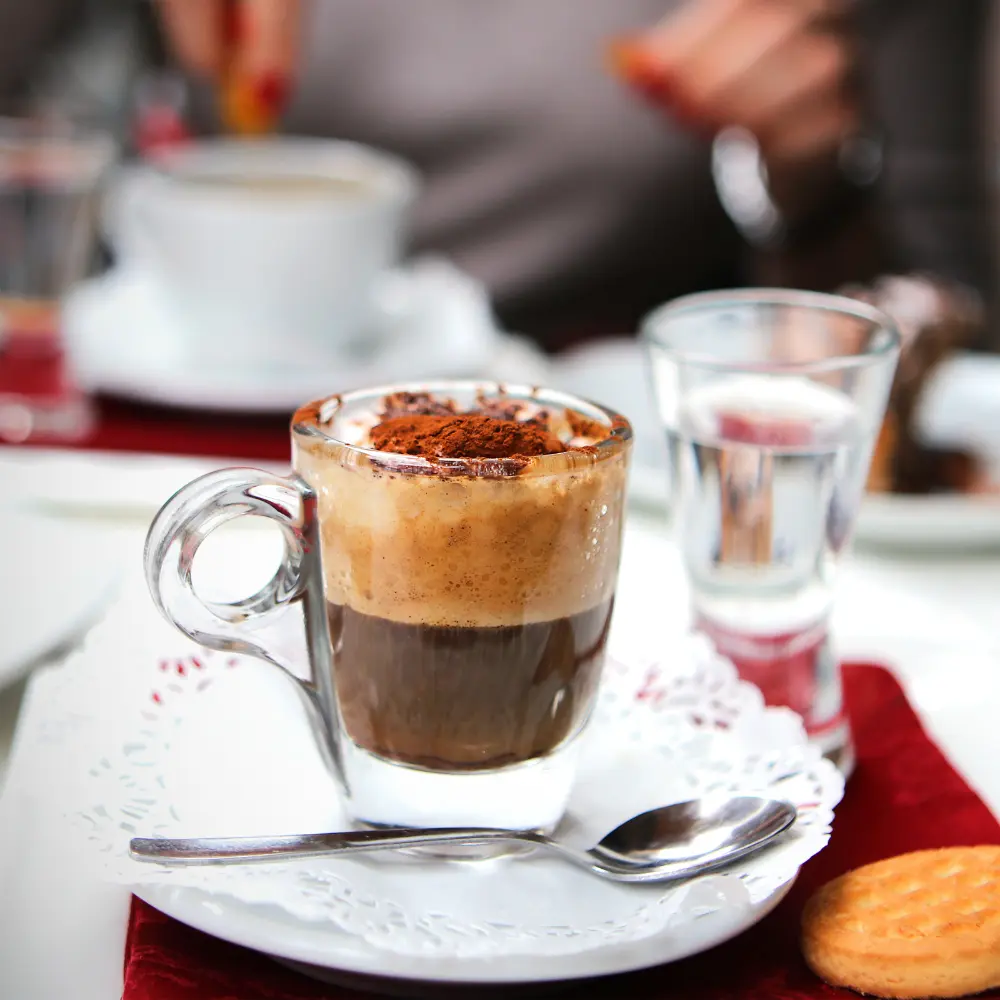
The Marocchino is a small, indulgent coffee drink from Italy. It’s made with a shot of espresso, a layer of frothed milk, and a dusting of cocoa. The result is a harmonious blend that captures the senses.
- How it’s made: To prepare a Marocchino, dust cocoa into a small glass, add a shot of espresso, and top with a layer of frothed milk. Finish with another dusting of cocoa.
- Key Highlight: The Marocchino is famous for its layered composition and the dusting of cocoa that adds a sweet, chocolatey dimension to the coffee.
- Fun Fact: The origins of the Marocchino beverage can be traced back to Bar Carpano in the town of Alessandria, Italy, emerging sometime following the conclusion of the Second World War.
The Bicerin
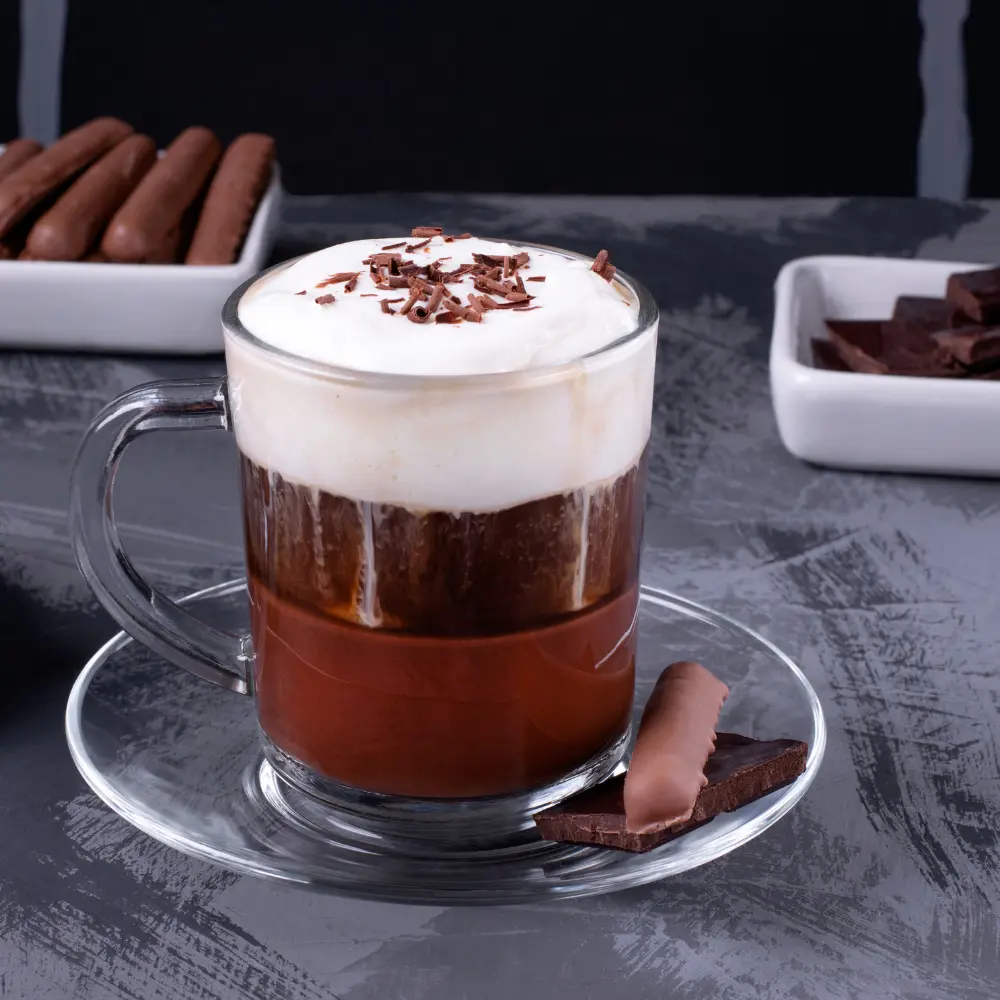
The Bicerin is a traditional Italian coffee drink native to Turin. It consists of equal parts of espresso, drinking chocolate, and whole milk served layered in a small rounded glass.
- How it’s made: To make a Bicerin, pour hot chocolate into a glass, carefully add a shot of espresso, and then top with frothed milk, taking care not to mix the layers.
- Key Highlight: The Bicerin is notable for its tri-layered composition, making it a visual treat as well as a sensory delight.
- Fun Fact: Bicerin, which translates to “small glass,” has been enjoyed in the region since the 18th century and was praised by Alexandre Dumas in 1852.
The Café Crème
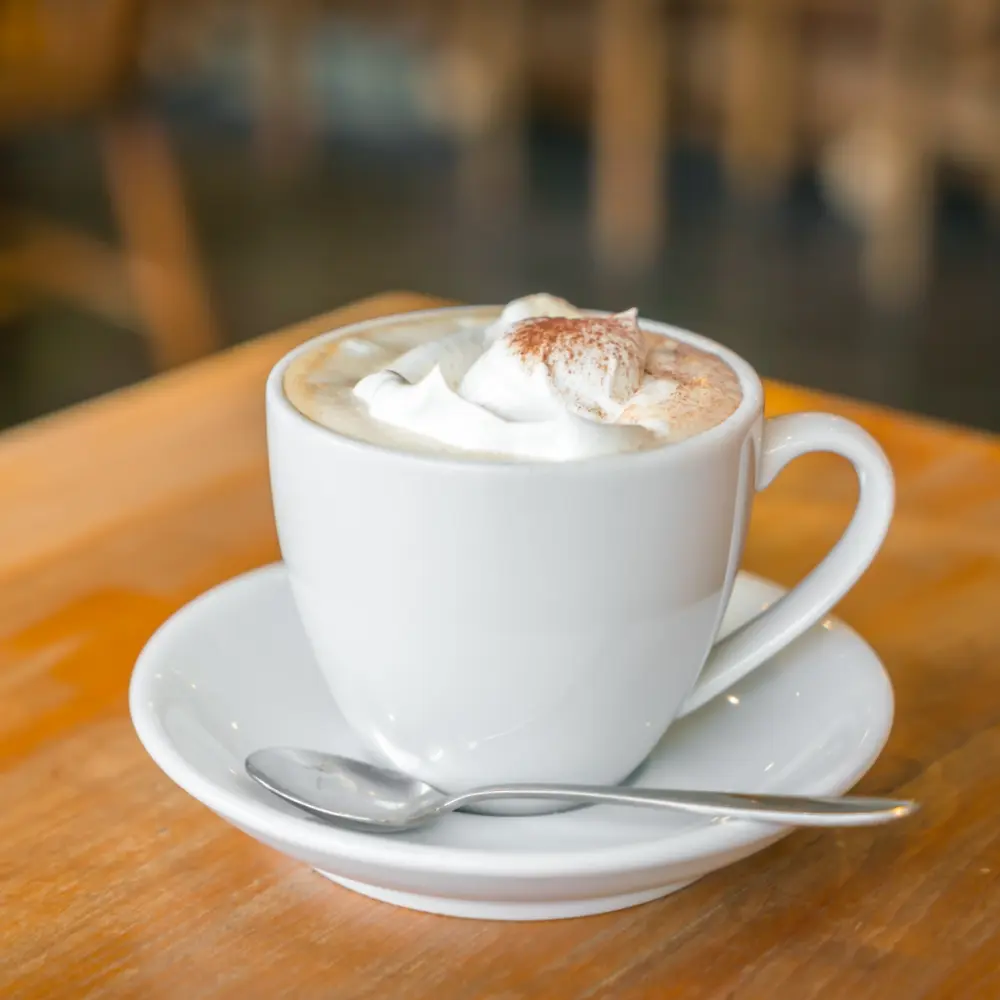
The Café Crème is essentially a French version of a latte. A popular order in French cafés, it consists of equal parts espresso and warm milk, often topped with a small amount of foam.
- How it’s made: To prepare a Café Crème, brew an espresso shot, add an equal amount of steamed milk, and top it with a bit of milk foam.
- Key Highlight: Café Crème’s distinguishing feature is its balance between espresso and warm milk, making it a milder and creamier drink.
- Fun Fact: Café Crème is typically served in a larger cup, which differentiates it from the more concentrated espresso served in small cups.
The Espressino
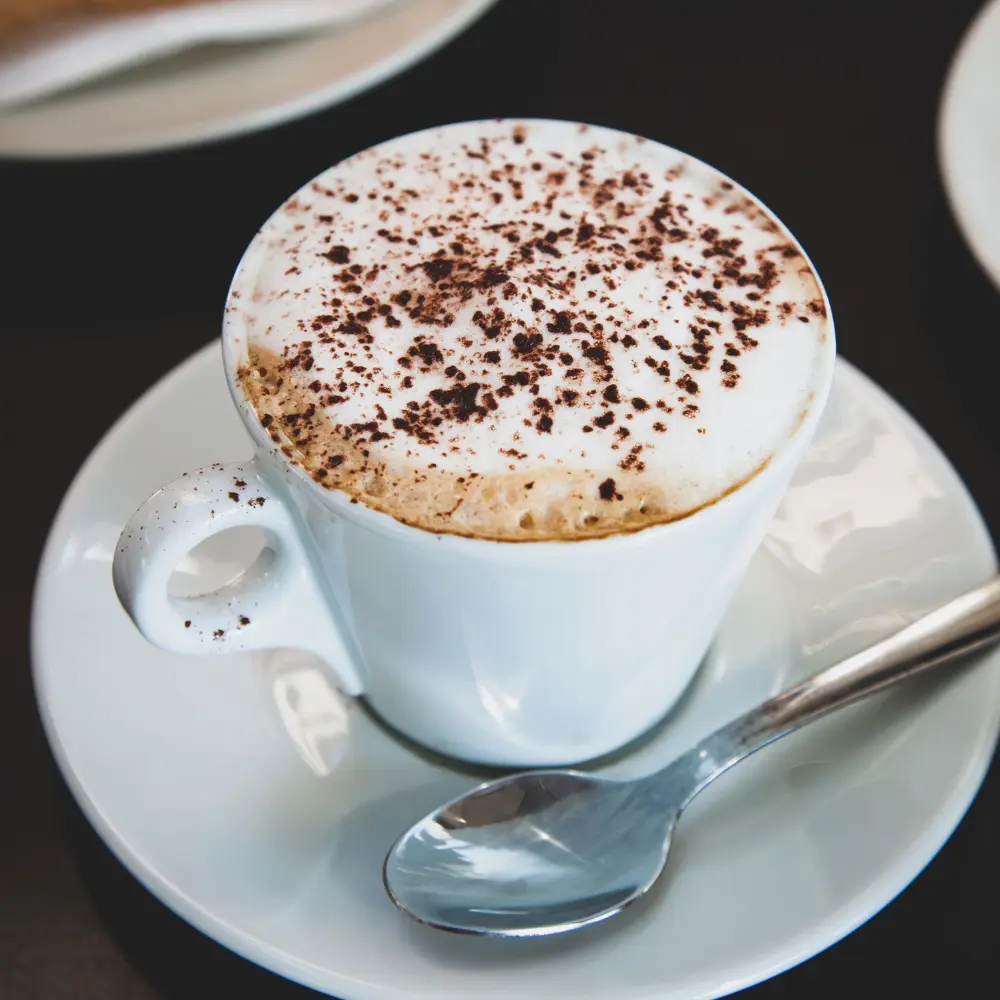
The Espressino is a small Italian coffee drink made with equal parts espresso and steamed milk, topped with cocoa powder. This drink is typically served in a demitasse.
- How it’s made: To prepare an Espressino, brew a shot of espresso into a small glass, add an equal amount of steamed milk, and sprinkle with cocoa powder.
- Key Highlight: The Espressino is a compact, intense coffee experience that combines the creaminess of steamed milk, and the luxurious touch of cocoa.
- Fun Fact: This drink is a special favorite in the Italian region of Apulia, where it is often enjoyed as a mid-morning treat.
Brewing Espresso at Home: A Step-by-step Guide
If the variety of espresso drinks discussed above has piqued your interest, you might be wondering if you can replicate some of these types of espresso drinks at home. The good news is that you can, and this guide will walk you through the steps needed to start brewing this lovely beverage at home.
Choosing Your Espresso Machine

The first step in your journey towards at-home coffee drink brewing is selecting the right machine. There’s a vast array of espresso machines on the market, from manual to semi-automatic, fully automatic, and super-automatic. Your choice depends on your budget, the level of control you desire over the brewing process, and the space you have available.
- Manual machines require the most skill, offering the most control but also demanding a steep learning curve.
- Semi-automatic machines strike a balance between control and convenience, requiring you to manually stop the flow of the shot.
- Fully automatic machines automate the pulling process but allow you to adjust settings like temperature and pressure.
- Super-automatic machines automate nearly everything, from grinding the beans to pulling the shot, perfect for those who want the utmost convenience.
The Role of Coffee Beans in Espresso Making
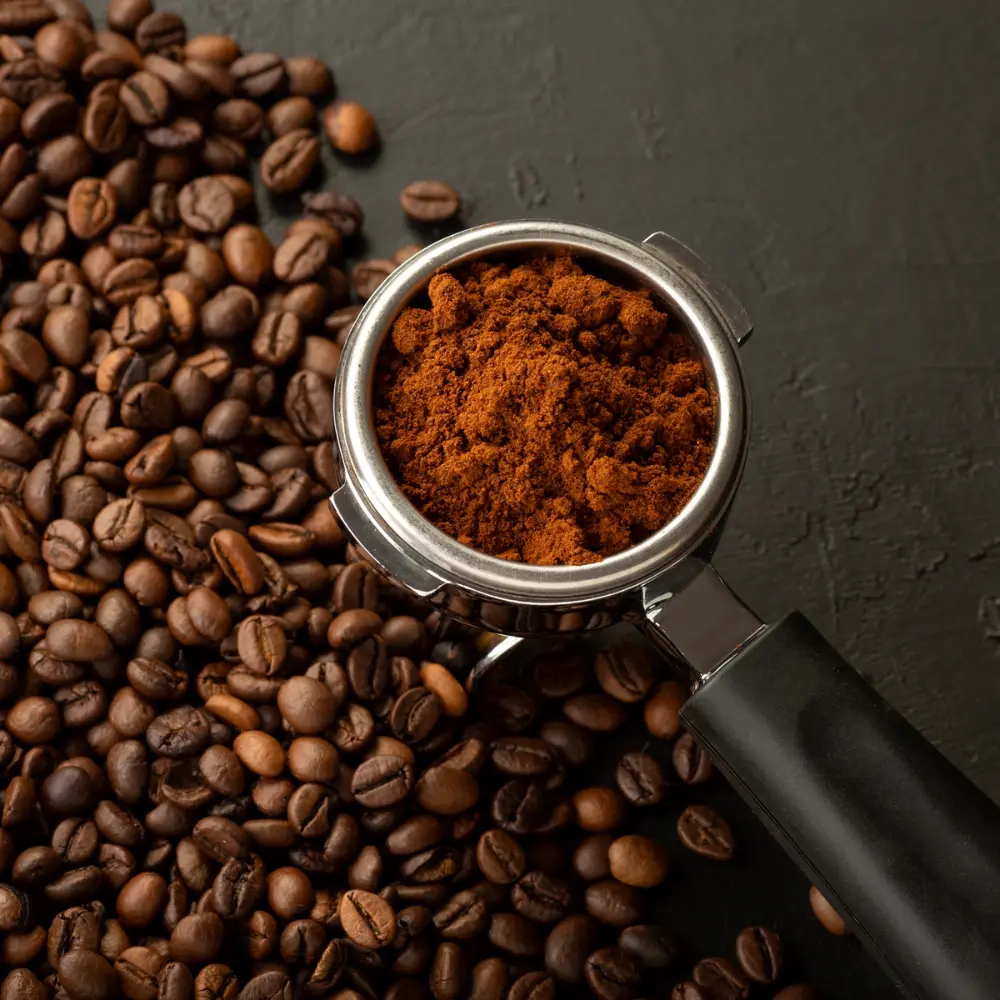
While the machine is vital, the coffee beans you choose to use are equally as important. This beverage is typically brewed using a blend of beans to achieve a balance of flavor, acidity, and body. Some prefer single-origin beans for their distinct flavor profile. Regardless of preference, remember that freshness is key. It’s best to buy whole beans and grind them just before brewing.
- Choose a blend or single-origin bean based on your taste preference.
- Ensure the beans are fresh. Look for beans that have been roasted within the past two weeks.
- Grind just before brewing to maintain freshness and flavor. The grind should be fine but not powdery.
A Barista’s Guide to Pulling the Perfect Espresso Shot
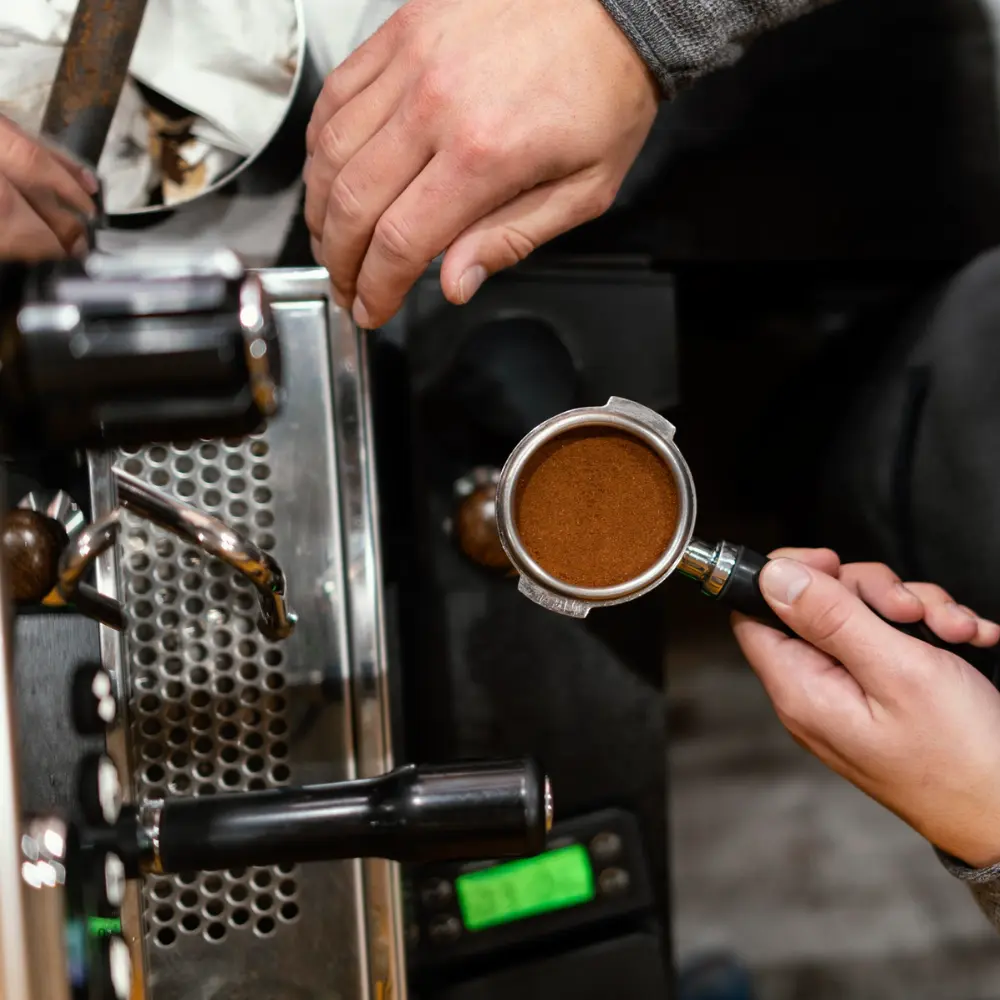
Now that you’ve got your machine and your beans, it’s time to pull the perfect espresso shot. This step is where the magic happens, and learning how to drink this coffee drink begins with understanding the brewing process.
- Start by warming up your machine and rinsing your portafilter.
- Grind your chosen coffee beans to a fine consistency, similar to table salt.
- Dose the right amount of coffee into your portafilter, usually around 18-20 grams for a double shot.
- Tamp the grounds evenly to ensure an even extraction.
- Attach the portafilter to your machine and start the shot.
- Aim for a shot time of around 25-30 seconds. You’re looking for a flow that appears like warm honey.
- Once done, discard the used coffee grounds and rinse your equipment.
Remember, patience is key, especially when you’re just starting out. With practice, you’ll be pulling coffee shots like a pro and enjoying your very own homemade espresso-based drinks.
Savoring Espresso: A Sensory Experience
Beyond the intense rush of caffeine, the joy of drinking this beverage comes from the sensory experience it provides. The rich aroma, the nuanced flavors, and the satisfying texture all contribute to this. This section is all about appreciating this lovely coffee drink to its fullest and understanding how to drink it for the most pleasurable experience.
The Art of Tasting Espresso
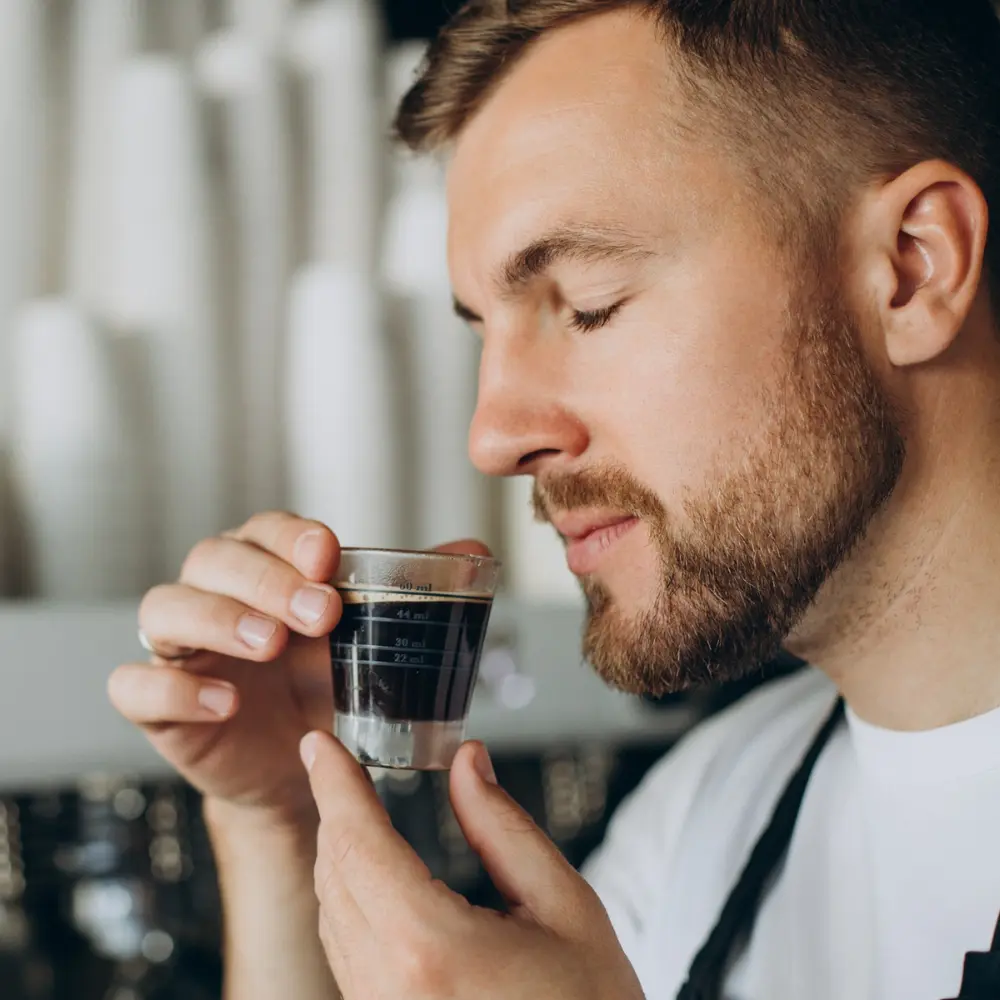
Tasting this beverage is an art that involves more than simply gulping down a shot. It’s about savoring the nuanced flavors that vary among different types of espresso drinks. Here’s how you can become a tasting connoisseur:
- Smell: Begin by inhaling the aroma of this beverage. A great cup of this coffee drink will smell sweet, nutty, and caramel-like.
- Slurp: Yes, slurp. By doing so, you ensure that the coffee drink touches all parts of your palate, allowing you to taste all the flavors.
- Savor: Let the beverage sit in your mouth before swallowing. Notice its body – it should feel dense and velvety.
- Aftertaste: Finally, pay attention to the finish. It should be pleasantly lingering, not bitter or harsh.
Pairing Espresso with Foods
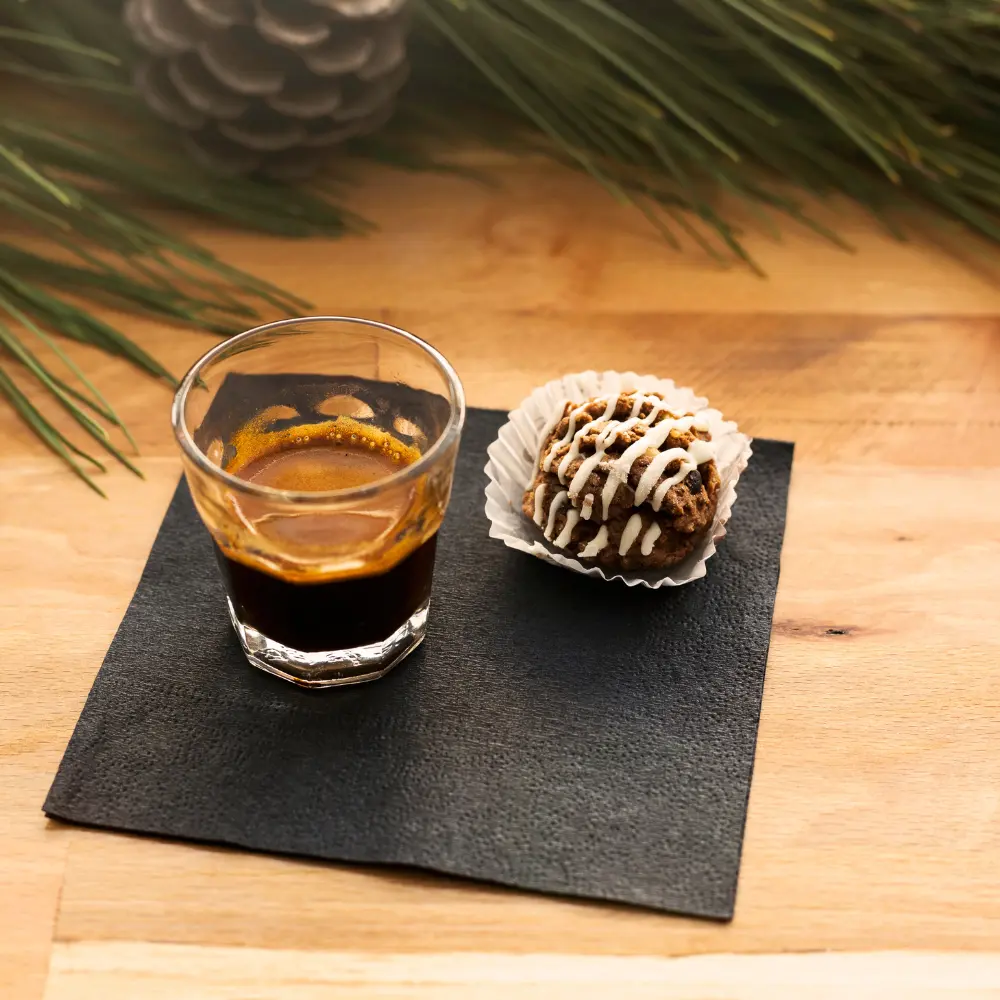
Just like a fine wine, this delectable beverage can be paired with foods to elevate the overall taste experience. The goal of pairing is to balance the flavors of the food and this coffee drink, enhancing each other rather than overpowering them.
- Sweet pastries and desserts: The sweetness of pastries and desserts can balance the intensity of this drink. Think croissants, biscotti, or a slice of tiramisu.
- Dark chocolate: A piece of high-quality dark chocolate can bring out the sweetness in this beverage.
- Nuts and dried fruits: Almonds, hazelnuts, or dried figs and apricots can complement the complex flavors of this drink.
Elevating Your Espresso Experience: Tips from the Experts
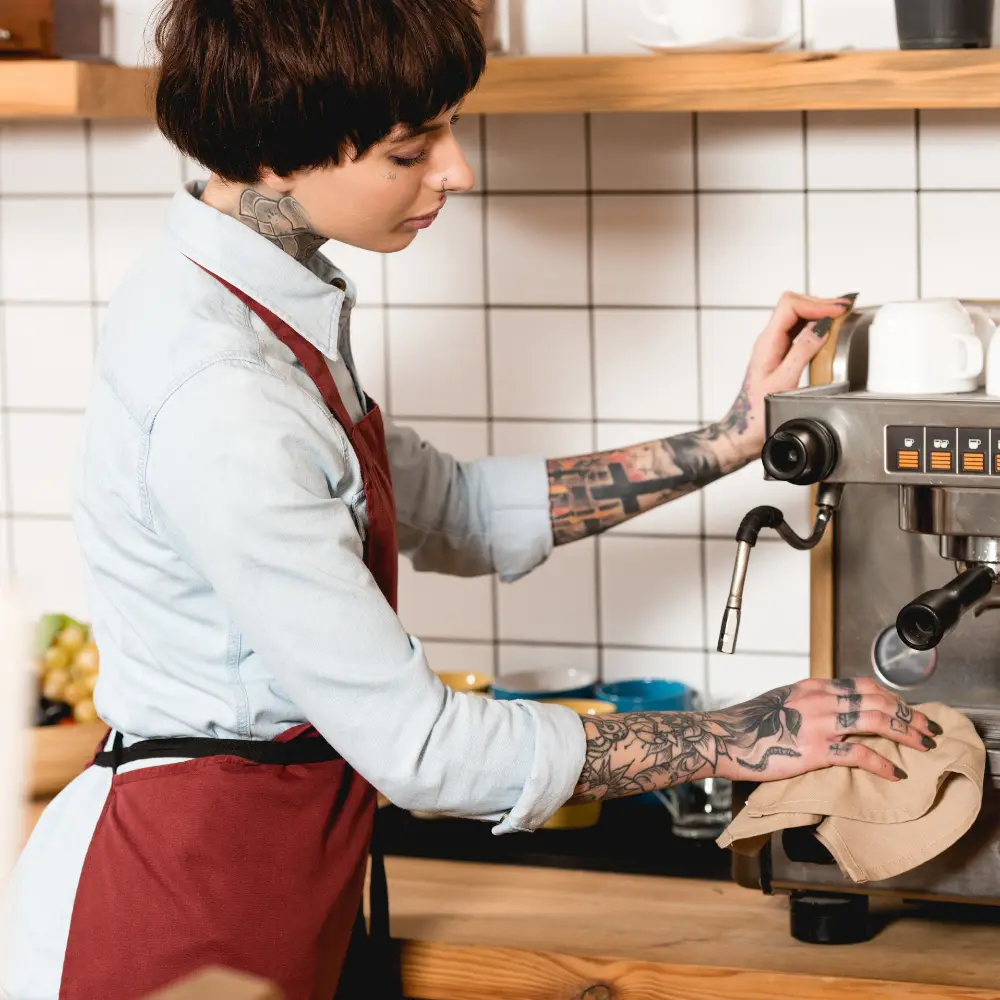
To further enhance your beverage-savoring journey, here are a few tips from the experts:
- Use the right glassware: This coffee drink is best enjoyed in a small, heated ceramic or thick glass cup that keeps the shot warm.
- Clean your equipment: Regular cleaning of your coffee machine is vital to prevent old coffee residues from affecting the flavor of your drink.
- Experiment: Don’t be afraid to try different beans, roasts, and extraction times to find your perfect shot. Remember, the best coffee beverage is the one you enjoy the most.
- Relax and enjoy: Lastly, take time to relax and truly enjoy your cup of joe. It’s not just about the caffeine hit, but the experience as well. Savor the moment.
Remember, savoring this delectable coffee drink is a personal experience. Whether you enjoy a simple coffee shot or prefer the varied tastes of different espresso-based drinks, the ultimate goal is to find enjoyment in every sip.
Conclusion: An Espresso World Awaits
The world of this delectable beverage is as deep and varied as the beans it comes from. Through exploring the different types of espresso drinks, we’ve journeyed from the simple, unadorned shot to the milk-infused artistry of cappuccinos and macchiatos, tasted the global spins on this classic Italian brew, and even dared to wake up with the potent “Eye” family of coffees.
In essence, This coffee drink forms the backbone of countless beverages, beloved by many for its complexity, potency, and sheer pleasure it provides. Whether you’re a seasoned barista or a casual coffee lover, the diversity and adaptability of this coffee drink offer a realm of exploration and enjoyment.
In this vibrant world of this drink, there’s always a new flavor to discover, a new combination to try, and a new experience to savor. The next time you sit down with your cup, take a moment to appreciate the rich history and skilled craft that goes into making that perfect cup of joe. Remember, the world of this distinctive beverage is as much about the journey as the destination. So, embrace your inner barista, experiment, and most importantly, savor the flavors of this delicious coffee drink.
FAQ
How is an espresso different from other coffee drinks?
Espresso is unique due to its brewing method, which involves forcing hot water under high pressure through finely ground coffee, resulting in a concentrated beverage with distinct aroma and flavor.
What are the different types of espresso drinks?
Espresso drinks range from the simple, like the classic espresso shot, ristretto, or lungo, to milk-based drinks such as cappuccinos and lattes, to regional specialties like the Café Cubano and the Italian Bicerin.
How can I make espresso at home?
To make espresso at home, you'll need an espresso machine, high-quality coffee beans, and a grinder. The key is to fine-tune the variables like grind size, brewing time, and temperature for the perfect shot.
How do you taste espresso like a pro?
Tasting espresso like a pro involves appreciating its aroma, analyzing its body and texture, discerning its flavor notes, and observing the aftertaste. It's a sensory experience that goes beyond just sipping coffee.













